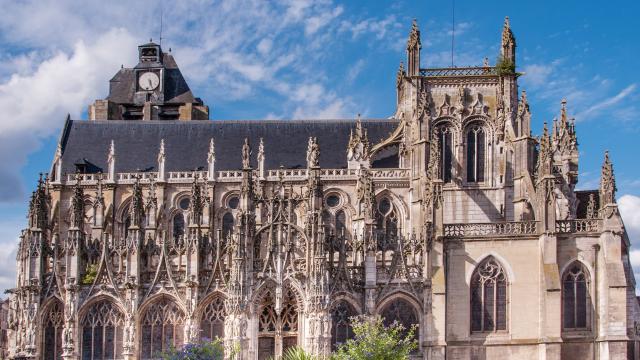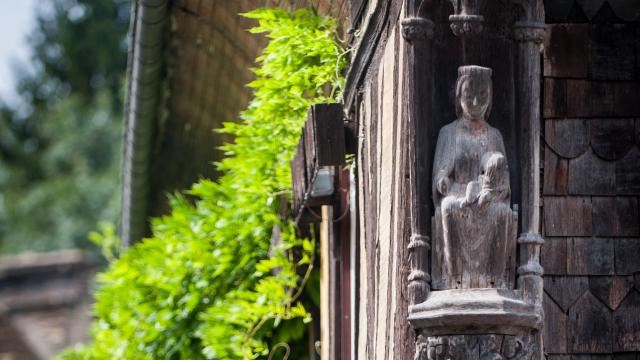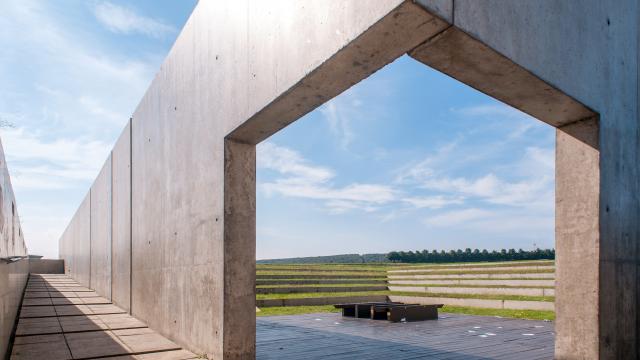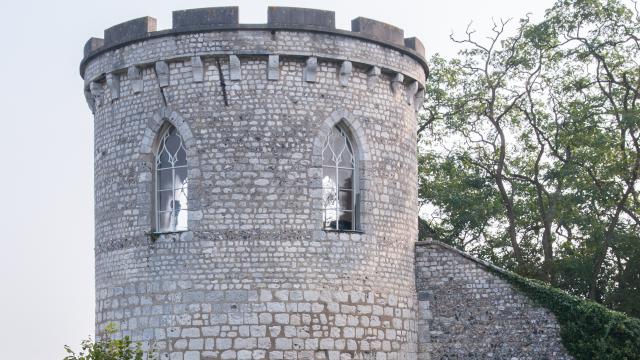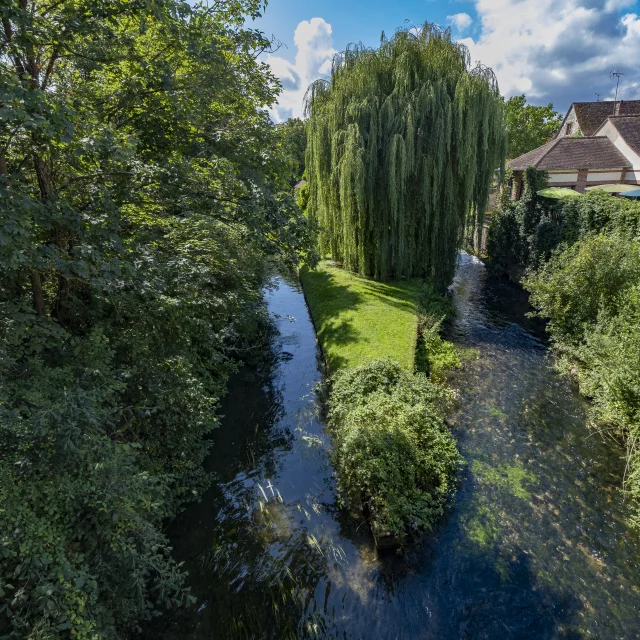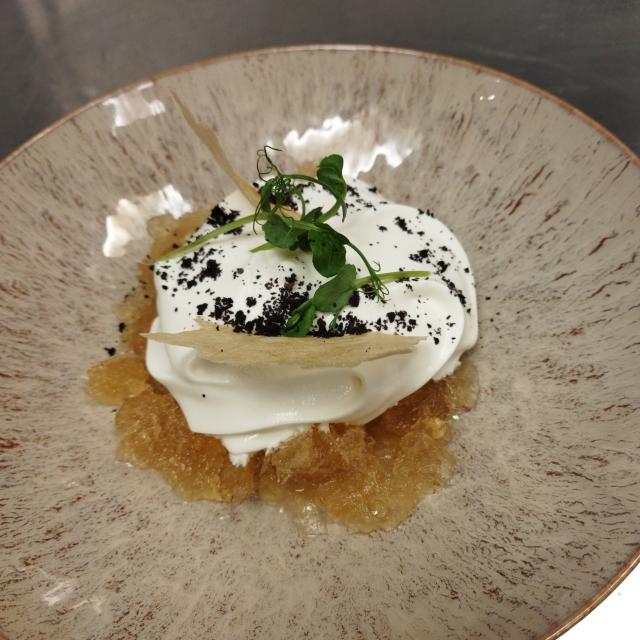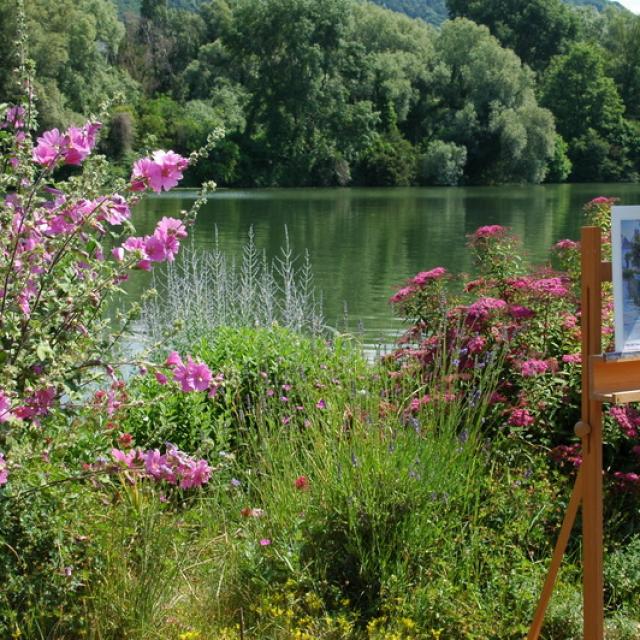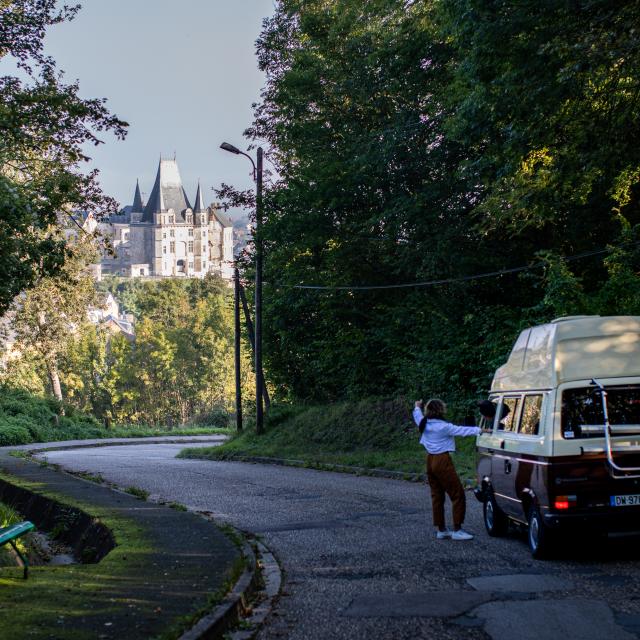Poses, an ancient barge town on the banks of the Seine
Nested between the Seine and immense lakes, the village of Poses developed thanks to the river and for a long time occupied an important place in the world of barge transport. From the Latin “Pausa” meaning pause or rest, this stopover was a must for bargemen after crossing the pertuis, the strait with strong currents between the Grande île and the mainland.
Despite the evolution of maritime transport on the Seine, the soul of this small town of boatmen, hauliers, fishermen and river carters remains authentic today. On foot or by bike, explore its remarkable maritime heritage along the towpath: the 235m-long dam and its locks, the Musée de la Batellerie with the tugboat “Fauvette” and the “Midway”, the church of Saint-Quentin with its graffiti depicting besognes (ancestors of barges). Embark in Poses for a cruise aboard the boat William the Conqueror between Poses and Vernon, and cruise peacefully along the route of the Seine mills and the Impressionists. For a more intimate atmosphere, opt for a private cruise with Liberté Seine on a boat that can accommodate 6 passengers.
A short diversions to the Seinoscope at the pass allows you to watch the fish swim up the river. Art lovers will push open the door of the art gallery of Michèle Ratel, a post-impressionist painter who happily shares her passion and inspiration.
Le Vaudreuil, a bucolic stroll by the water
Created in 1967, the small town of Le Vaudreuil offers a blossoming face, nestled in the hollow of the valley and crossed by the Eure. An invitation to stroll along the river!
In the past, the Vaudreuil estate covered the Lower Eure Valley, from Incarville to the Seine. Its name is said to mean “the ford in the valley” due to its strategic position. Its history is closely linked to the history of France.
The Eure brings a lovely freshness to the Vaudreuil countryside. Take the towpath, pass by the golf course and venture into the heart of nature in the Pâtures wetlands. In the heart of this 50-hectare area, 10 of which are open to the public, observe the ecological richness of this rare biotope: 3,000 trees of local species (ash, willow, oak, birch, black poplar…) Escape and a change of scenery guaranteed!
The church of Saint-Cyr, the Sergenterie, the Hôtel-Dieu, the church of Notre-Dame, the manor house of la Rive, the Maison des pages and the old coaching inn punctuate your journey through the heart of Vaudreuil’s heritage.
Acquigny, a Confluence town steeped in history
The flagship monument of this village nestled at the confluence of the Eure and Iton rivers, the Château d’Acquigny is one of the finest examples of Renaissance architecture at its height. The Italianate loggia is a real gem, while the south facade of the château heralds Classicism.
Labelled a “Remarkable Garden”, its 16-hectare landscaped park, designed and planted at the end of the 18th century, is a collection of spectacularly large exotic trees: redwoods, Louisiana cypress, Chinese sophra, Oriental plane. The 400-metre-long water mirror, orangery and kitchen garden are just as sumptuous. A must-see for families, lovers or friends during your stay in Seine-Eure!
As far as heritage is concerned, don’t miss the former 16th-century prison on the right bank of the Eure, which was the seigniorial court where the barony of Acquigny held court. The old railway station is an architectural curiosity well worth a visit. The chapel of Saint-Mauxe and the church of Sainte-Cécile evoke different waves of Christian architecture.
Les Damps, discovery trail along the Eure
At Les Damps, walk along the banks of the Eure and discover the village’s heritage during an hour-and-a-half stroll punctuated by historical and architectural curiosities: the bridge over the Eure, the Gentilhommière, Saint-Pierre chapel, the reinforced cement barge that is the only barge in the euroise, the “Camp aux Anglais”, the “Les Vauges” and “Le Corbusier” districts, the town hall and finally the Maison de la Dame Blanche, the oldest visible building in Les Damps.
Clef-Vallée-d’Eure, a walking trail linking several communes
Cross this atypical commune with a strange name, which includes the communes of Ecardenville-sur-Eure, Fontaine-Heudebourg and La Croix-Saint-Leufroy. A walking tour takes you past the parish church of Saint Paul, the town hall dating from 1882, the double wash-house, the farm known as “du manoir”, the turrets of the former abbey of La Croix-Saint-Leufroy and the old mill that was once Marcel Pagnol’s second home. This tour, available from the Tourist Office, is also available in a fun version for children aged 3 and over.




